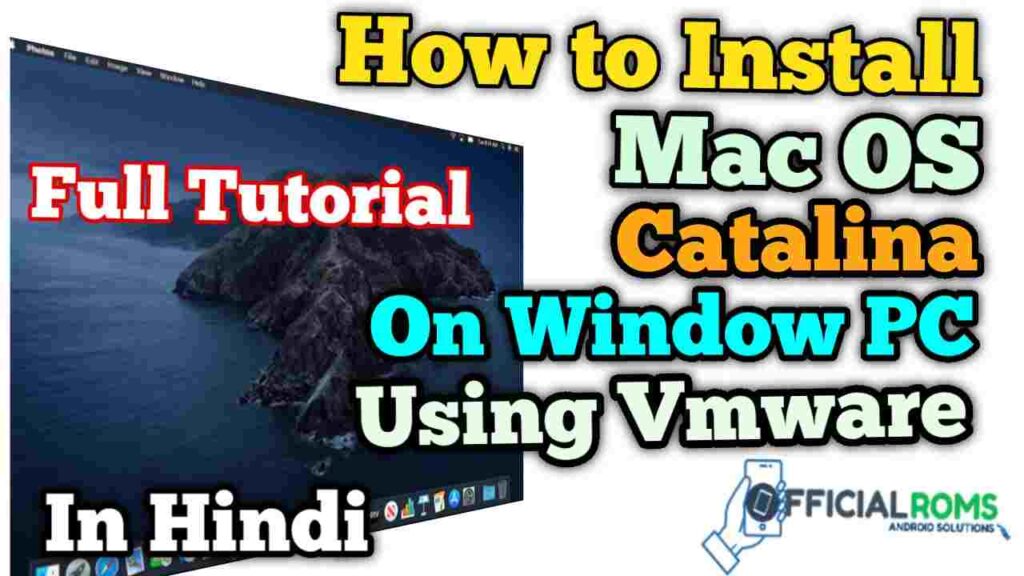Mac Os Catalina For Vmware
- Vmware Fusion Macos Catalina
- Vmware Tools For Mac Os Catalina
- Vmware Player Macos Catalina
- Mac Os Catalina Iso For Vmware
This macOS Catalina ( VMDK) file format may be used to install and operate macOS Catalina on VMware Workstation, Player, Fusion, and VirtualBox. The best part is, the single macOS Catalina VMware and VirtualBox image work for VMware and VirtualBox. Developing a macOS virtual machine picture needs a complex process of establishing, configuring. This exercise was to get a running MacOS Catalina VM instance running on VMware. I first wrote this for Catalina Beta but afte rthe official release, a couple things changed. So now it is how to install Catalina on ESXi 6.7. I am using a 2013 Mac Pro with VMWare 6.7 U2 installed. I have High Sierra and Mojave VMs running on the host. For example, you can install macOS Catalina 10.15 on Virtual machines such as VirtualBox, VMware Workstation or Player, or Hyper-V. While you are a Mac user so you can run Windows operating system on Mac through VirtualBox. Or if you are Windows user simply with some steps you can install macOS operating system through Virtual machines.
We download macOS Catalina ISO and macOS Catalina VMware & VirtualBox Picture. We will also download macOS Catalina ISO for VMware & VirtualBox. The file is encrypted using a password that the password of macOS Catalina VMDK is, Geekrar.com. macOS Catalina VMDK, download macOS Catalina VMDK, VMware image download, macOS Catalina VMDK download, mac os Catalina VMDK download, macOS Catalina VMDK Virtualbox, Geekrar Catalina password, mac os Catalina iso download to get VirtualBox, mac os Catalina image download. Starting with the macOS upgrade which ago yesterday, on the edge of updates, Apple kicked off another version of macOS, California-inspired”macOS Catalina.”
In Catalina, various new features and improvements will ship this autumn. The biggest updates go to iTunes, which is now 3 apps of Apple Music, Apple Podcasts, Apple TV. The only app iTunes isn’t a fantastic choice to perform each of the operations. That is why it is not a single program, but just three. Interestingly, syncing and managing your iPhone is currently entirely treated with the Finder. The upcoming cool upgrade is your Sidecar using iPad. With Sidecar, you may use your iPad as a second screen for your Mac. This allows you to utilize the multi-touch of your iPad to the Mac, including drawing and sketching. Including these attributes, there is a ton of new features and updates.
That said, if you would like to install macOS Catalina at some point whether creating some programs or catch up with everything, you’ll certainly want the macOS Catalina VMware or VirtualBox picture. This picture is really distinct from the macOS Catalina ISO and Macintosh version. The distinction is, we construct the macOS Catalina VMware and VirtualBox picture particularly for virtual machine usage. Rather, the Macintosh version is only for Mac that can be found on App Store but as it is in beta mode, it’s available for developers.
To try macOS Catalina on a digital machine, you need to get into the virtual machine’s macOS installer image. There are a variety of digital machine apps. The popular ones are VMware Workstation Player and VirtualBox. These two virtual machine apps accept .vmdk file extension. The best part is, the only macOS Catalina VMware and VirtualBox image work for VMware and VirtualBox.
Creating a macOS virtual machine image needs an intricate procedure of establishing, configuring, and setting up for making it ready. While we’ve established the macOS Catalina VMware and VirtualBox image to simplify the process. We’ve entirely assessed and uploaded it into a strong server so you can get it with ease. All these documents are packaged together into a single virtual disk image that has a file extension .vmdk which is supported by both of those machine programs. In order to obtain, all you have to do is walk after the hyperlink address and you are going to be straightly on the window. Double-click on the picture and click on the Download button.
macOS Catalina
When it comes to entering or testing apps, apps, or operating systems, virtual machines are the perfect choice to decide on. They allow you to run different distinctive operating systems, run apps on them, or try installing whichever apps you like. They function in a sandboxed environment that’s completely out of your actual operating system. No matter which operating system you’re already using, it is possible to install virtually every operating system and do much worse things. This is sometimes running maliciously or worse, that you’re not able to do inside your current operating system. Whenever there’s something wrong, you may easily delete the virtual system if that’s on VMware or VirtualBox.
Installing a digital machine, macOS Catalina or macOS Mojave, necessitates the virtual machine image. If you Google, you will not find the functioning macOS Catalina VMware and VirtualBox image except for broken pictures. In this case, we have worked to make the macOS Catalina VMware and VirtualBox pictures and uploaded them in different sorts. The most important one is the current one that we have uploaded in uTorrent. Here is how to catch them. Plus, we’ve established and upload the macOS Catalina VMDK file also. Here is the most recent version of this macOS Catalina VMDK file, so be sure to check out.
It’s worth mentioning that this single macOS Catalina image works for both VMware and VirtualBox.
MacOS 10.15.3 Catalina Final VMware & VirtualBox Image January 28, 2020
MacOS 10.15.3 Catalina Final (One Full — Google Drive) — The macOS Catalina VMware and VirtualBox image is the latest edition of macOS Catalina. If the newer version is out, we will keep you updated. To download, click the image and you may download it within an instant.
MacOS 10.15.3 Catalina Final (One Full — 7 ) — The macOS Catalina VMware and VirtualBox image is present in two distinct sizes. The very first one is the only one file. The next one is split into components which are available to download into several components.
MacOS 10.15.3 Catalina Final (One Complete — MediaFire) — Oftentimes, Google Drive has some issue with downloading. Although, it is possible to bypass Google Drive download limitation, but it may be better not to experience a problem so that it’s a good reason for downloading in MediaFire.
Password: Geekrar.com
If there’s some problem with downloading, then you can always download macOS Catalina ISO File For VMware & VirtualBox, or even if you’d like to you can even create macOS Catalina ISO for installing Catalina on a virtual machine.
Note: While the final verion of macOS Catalina is there, we’ll update the files whenever the newer version is out.
WinRAR — 7-Zip — To extract and unzip the downloaded files, you will want to download and install the latest version of Winrar or 7 Zip.
Together with the necessary files, you are now prepared to attempt to install macOS Catalina on your Windows computer.
on VMware ESXi 6.7 U3 P02
** UPDATE 12/03/2020**

** UPDATE 04/15/2020**
Seems you need to start at Mojave to be able to download the full Catalina package from the App Store. I started from Mojave so I never ran into the issues found in the comments. Check the comments for what Adam had to say...
** UPDATE 10/17/2019**
After applying the first update, the VM was rendered un-bootable again. That is the same crash that is originally experienced. SEE Boot Work Around at the bottom.
This exercise was to get a running MacOS Catalina VM instance running on VMware. I first wrote this for Catalina Beta but afte rthe official release, a couple things changed. So now it is how to install Catalina on ESXi 6.7.
I am using a 2013 Mac Pro with VMWare 6.7 U2 installed. I have High Sierra and Mojave VMs running on the host. Running VMs on VMware is something I've done for a few years.
The MacOS Part
If at first You Don't Succeed...
I started with trying to upgrade a Mojave VM to Catalina. I just downloaded Catalina from the Apple Store (Search: macos catalina).
Try Something Else... And It Worked!
To start from scratch on a Mojave instance, download Catalina from the app store (Search: macos catalina). Just don't run the installer. You need the app image to create the ISO.
The VMware Part
I created a blank VM with the following settings: These are important. Just follow my lead here.
These are important. Just follow my lead here.Once the VM is saved, edit the settings and change to
Guest OS: Windows
| Changed to Windows 10 |
Open a Remote Console (VMRC)
| Attach ISO |
Reset the VM
The VM should boot to the image and continue installing Catalina. When it finishes (10 or so minutes) it will reboot.
After the reboot, it will freeze on the blank Apple logo or unsuccessfully load MacOS X. Don't fret.. We're OK.
Power off the VM
Good luck on your adventure!
Configure Boot Options
Change Boot Order
Press Enter then change the boot order in the pop up window using + and - keys. Press Escape when done editing.
Move EFI Virtual SATA Hard Drive (0.0) to the Top
You can see I change the overall boot order to:
Hard Drive
CDROM
Vmware Fusion Macos Catalina
Mac OS XVmware Tools For Mac Os Catalina
